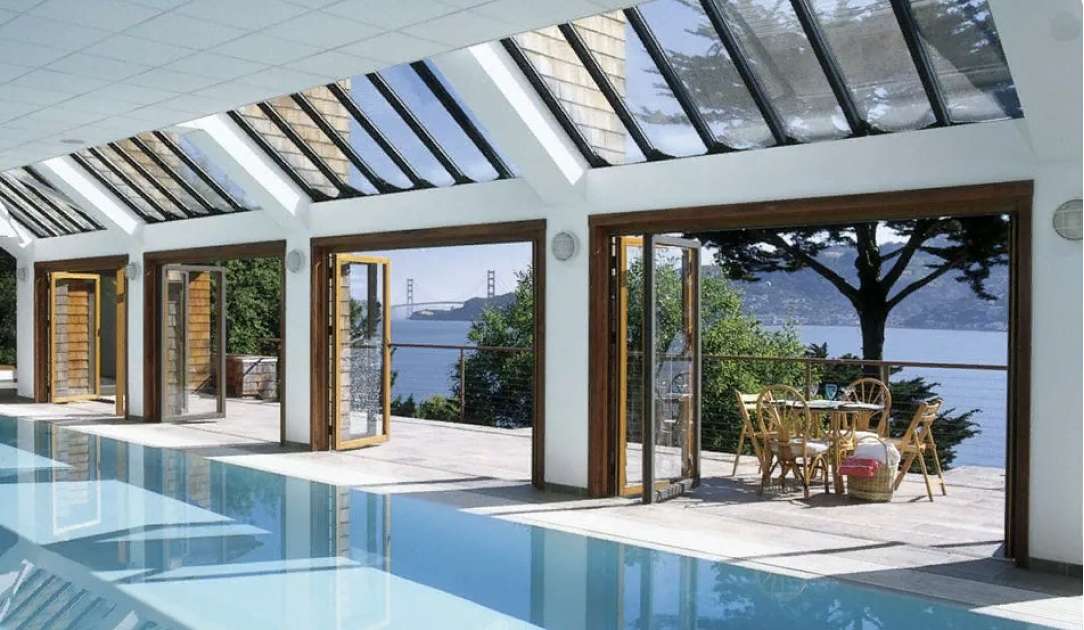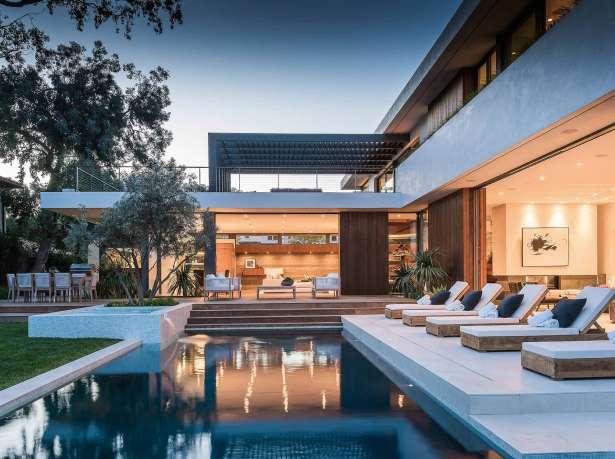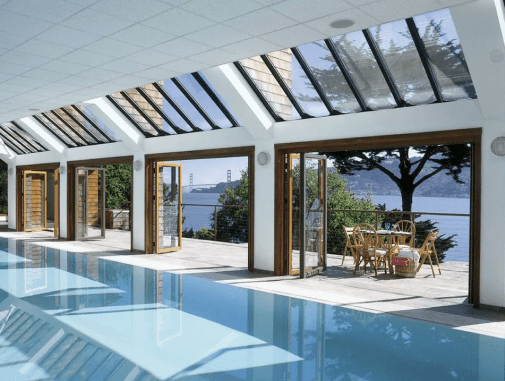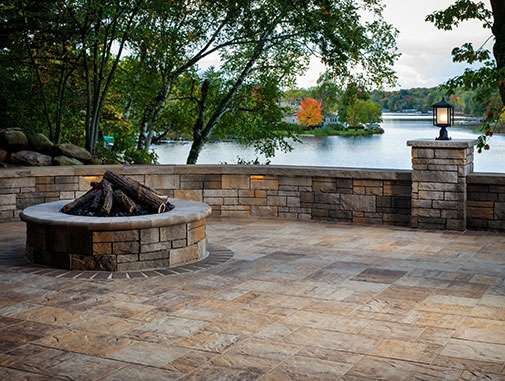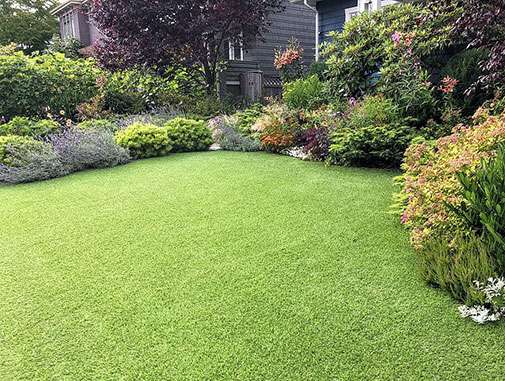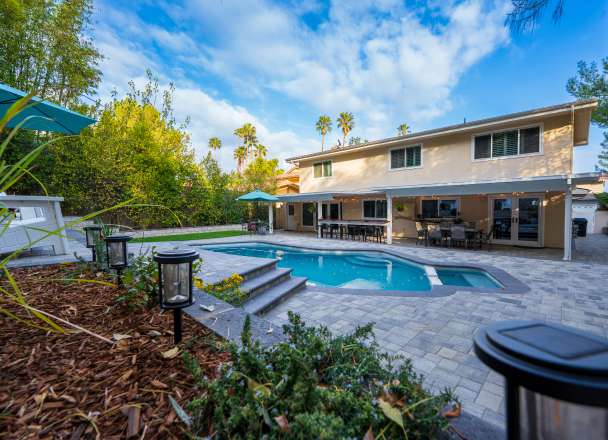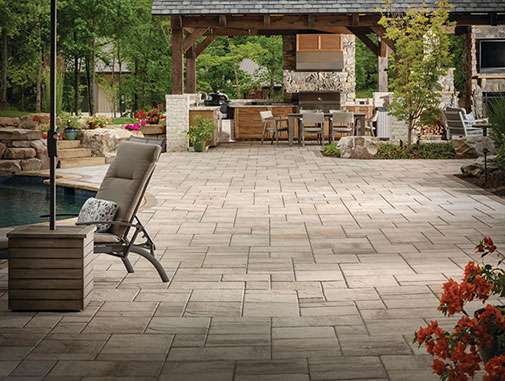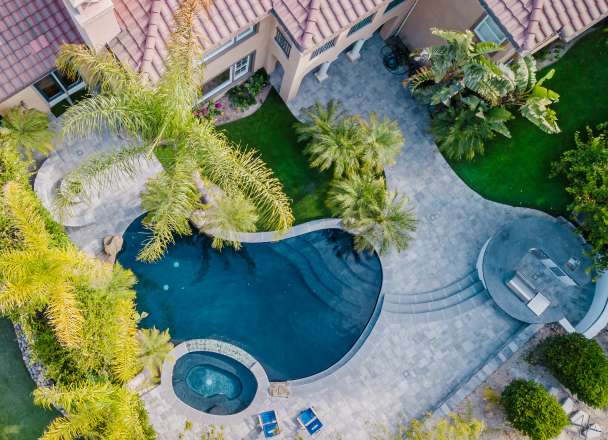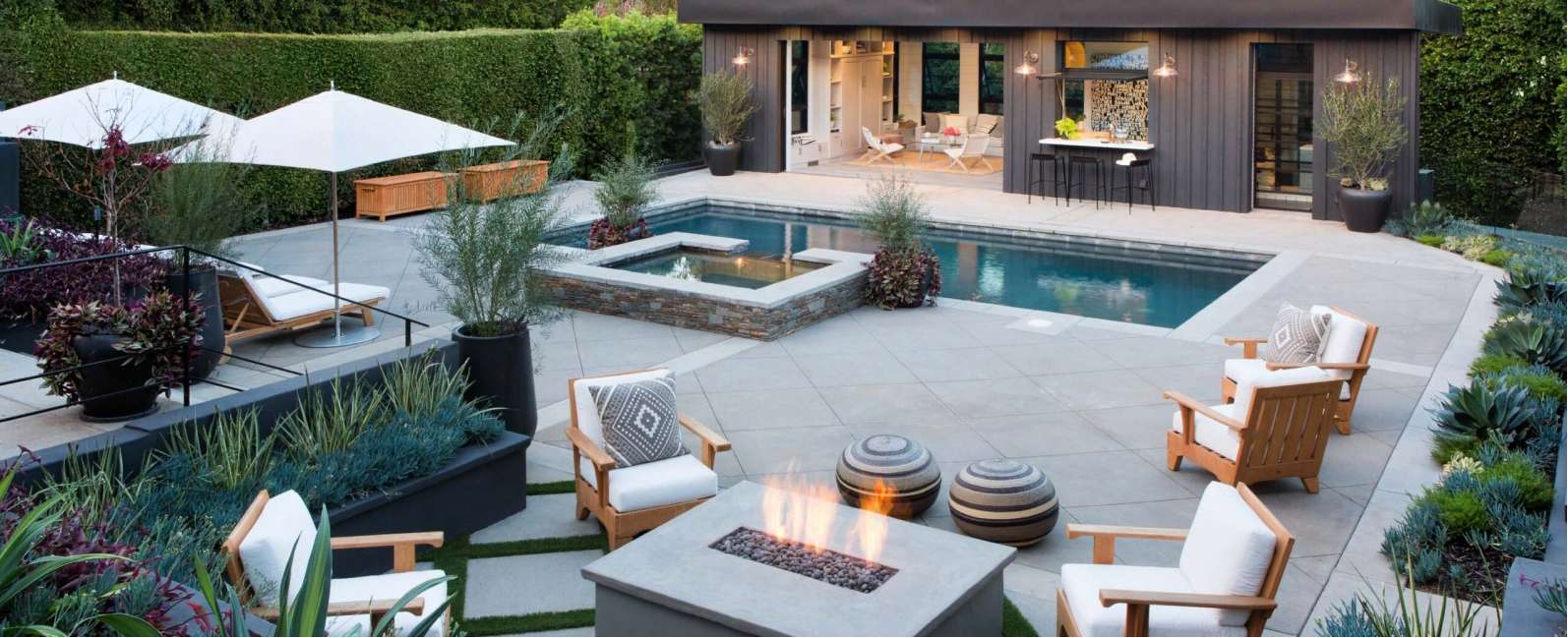Backyard Remodeling: Pergola vs Gazebo
- #Exterior Remodeling
- #Outdoor Living
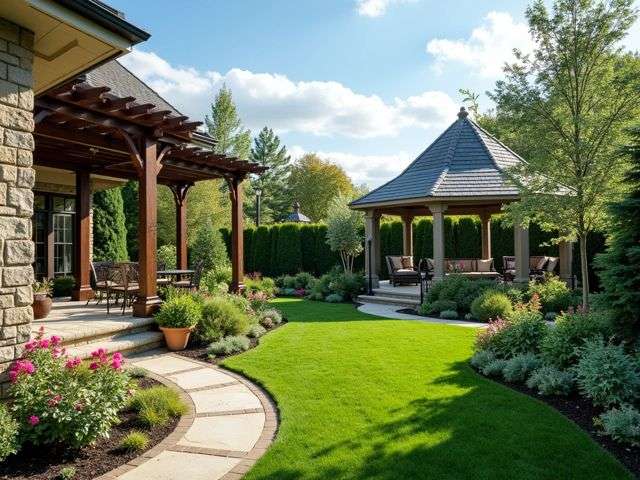
- Smooth Plaster Finish
- Shimmering Pebble Finish
Pergolas offer an open, airy space with limited protection from the elements, making them ideal for casual gatherings. Gazebos, with their enclosed structure, provide full shelter and are suited for all-weather entertaining.
1. Key Differences Between Pergolas and Gazebos
Pergolas and gazebos each present unique features that can enhance your backyard for a family. Understanding their differences can help you choose the best option for your needs and lifestyle.
Gazebos are traditional structures with a rich history, dating back to ancient Egyptian gardens. They typically feature a fully enclosed roof, offering complete shelter from the elements, such as rain and harsh sun. Commonly designed with a pitched roof for optimal rain runoff, gazebos can be built with various materials and often come with raised flooring. This added height keeps the space dry during showers and enhances the outdoor view. Their design is usually polygonal, with options for either open sides or partial railings, providing a cozy area perfect for gathering, whether it’s for a barbecue or family games.
In contrast, pergolas are more contemporary, originating in the late medieval period. They feature a distinctive open lattice roof, made of interlocking beams that allow sunlight to filter through while offering limited rain protection. This makes them ideal for gardens and patios where families wish to enjoy the sun and have space for climbing plants. Pergolas can be freestanding or attached to a home, making them versatile additions to your outdoor decor. A unique benefit is the option to add soft shade canopies for those sunny days, adding a level of comfort without sacrificing style.
When considering function, gazebos excel in providing reliable shade and weather coverage, making them suitable for entertaining regardless of the conditions. Their enclosed structure creates a comfortable area for furniture, grills, or even a relaxing hot tub. On the other hand, pergolas are often favored for casual dining experiences and gatherings where families appreciate a more open atmosphere, allowing for air circulation and light.
For those looking to create smaller, intimate spaces, options like grill gazebos or cabana pergolas are available. Grill gazebos serve as compact structures designed to protect your grilling equipment, enhancing the cooking experience during any weather. Cabana pergolas, with their two-wall design, provide a snug nook for family gatherings or quiet moments in the garden.
In summary, when deciding between a gazebo and a pergola, evaluate your personal preferences and what fits best with your yard’s characteristics. Gazebos provide a more fully protected environment, perfect for all-weather use, while pergolas offer a stylish, open space that integrates beautifully with nature. Each option will transform your backyard into a valuable retreat for your family.

2. Space Considerations for Backyard Structures
When imagining your outdoor space, the size and layout of your yard play a significant role in deciding between a pergola and a gazebo. Each structure offers distinct advantages, and understanding how they fit into your available space is essential for creating the perfect backyard retreat.
Gazebos are robust structures designed for larger areas. Their solid rooftops provide complete coverage from the elements, making them an excellent choice for families seeking a comfortable space for gatherings, relaxation, or entertaining. Gazebos come in various shapes, often hexagonal or octagonal, but they can also be square or rectangular. This versatility allows you to find a design that complements your existing yard layout. They can be elevated on platforms for a dramatic effect, but they do require more room to accommodate their size and footprint.
Pergolas, on the other hand, are more adaptable to smaller spaces. Their open-roof design features vertical posts and cross-beams, offering partial shade while allowing sunlight to filter through. This makes them perfect for creating cozy outdoor dining areas or integrating seamlessly into garden landscapes. They can be freestanding or attached to your home, allowing you to position them according to your yard’s unique characteristics. With the ability to support climbing plants, pergolas bring a touch of nature and sophistication, enhancing the overall ambiance.
When deciding which structure suits your backyard, consider your main goals for the space:
- Available Space: For expansive yards, a gazebo can serve as an inviting centerpiece. If your space is limited, a pergola can provide charm without overwhelming your outdoor area.
- Desired Functionality: Think about usage. Gazebos work well for sheltered gatherings or intimate family dinners, offering coverage regardless of the weather. In contrast, pergolas create an open, airy environment suitable for leisurely afternoons among greenery.
- Aesthetic Goals: Each structure lends a different style to your backyard. Gazebos often exude a classic appeal with their more enclosed design, while pergolas offer a modern twist that encourages natural elements.
- Budget Constraints: Gazebo construction tends to be pricier, typically ranging from $5,358 to $9,058, due to their intricate designs and materials. For a more budget-friendly option, pergolas range from approximately $2,100 to $6,000, making them a practical choice for families looking to enhance their space without overspending.
Incorporating either a pergola or a gazebo can transform your backyard into a functional and beautiful area for your family. By assessing your space, preferences, and intended use, you can make an informed decision that enhances your outdoor experience and offers a welcoming retreat for years to come.
3. Material Choices for Your Pergola or Gazebo
When deciding on materials for your pergola or gazebo, several options cater to various needs and preferences of a family looking to enhance their outdoor space. Three popular materials include pressure-treated wood, vinyl, and aluminum, each presenting distinct benefits and challenges.
Pressure-treated wood provides a budget-friendly option that appeals to families seeking versatility. Its ability to be stained or painted means it can fit into both rustic and modern designs. However, this material requires regular maintenance; re-painting and re-staining can become a chore. With a shorter lifespan compared to alternatives, the longevity of pressure-treated wood might affect long-term value.
Vinyl is an attractive choice for those prioritizing minimal upkeep. It stands strong against mold, termites, and rot, ensuring a clean and elegant look over the years. Although the initial cost can be higher, the lack of maintenance needs may balance this in the long run. An important note is that vinyl cannot be painted, limiting customization.
For families seeking natural aesthetics combined with durability, cedar wood stands out. Known for its rich color and pleasant aroma, cedar is resistant to rot and pests. This material is moderately priced compared to pressure-treated wood but requires regular staining to keep its vibrant hue.
Aluminum presents a compelling alternative that combines durability with style. Its resilience against rot, rust, and UV rays ensures that families can enjoy their outdoor structure without concern for weather damage. Low maintenance is another significant advantage, as aluminum requires no repainting or resealing. While the initial investment may be higher, its longevity and minimal upkeep can make it a wise choice over time.
Ultimately, the decision on material hinges on your family’s preferences, budget, and the specific climate of your area. Climate implications can play a vital role; for instance, cedar thrives in diverse weather conditions but needs protection from harsh environments. High-quality craftsmanship is key regardless of the material, as a sturdy, well-built pergola or gazebo enhances both durability and visual appeal in your backyard setting.

4. Installation Methods: DIY vs. Hiring EHD Builders
When it comes to installing a pergola or gazebo in your backyard, deciding between a DIY approach and hiring professionals can be overwhelming for a family. The choice often hinges on several factors, including the project’s complexity, your personal skills, and safety considerations.
Undertaking a DIY project can deliver a sense of accomplishment and can be more cost-effective. Simple installations, such as building a pergola, often require basic construction knowledge, readily available materials, and some time commitment. Engaging in these lighter tasks allows you to customize your outdoor space according to your family’s needs, and turn your backyard into a cozy retreat.
However, some projects are better suited for professionals. Complex installations such as gazebos or hardscaping tasks demand specialized knowledge and tools. Experienced builders like EHD Builders understand local codes and regulations, ensuring that your project meets safety standards while also enhancing the property’s value. Moreover, professionals can often source materials at a lower cost and complete projects more efficiently, saving you time and potential stress.
Projects that Benefit from Professional Expertise:
- Complex Structures: Gazebos often feature intricate designs that require precise construction techniques. Attempting this as a DIY project may lead to unforeseen challenges.
- Safety Regulations: Professionals are familiar with zoning laws and necessary permits, ensuring compliance and avoiding costly fines.
- Specialized Services: Projects such as outdoor kitchens, where plumbing and electrical work is involved, call for someone with the right expertise to avoid safety hazards.
For lighter projects, like flower beds or natural side tables, a DIY approach is enjoyable and fulfilling. They require minimal skills and can be a fun activity for the family. However, if your project exceeds simple tasks, opting for professionals can ultimately provide long-lasting results and peace of mind.
Fully evaluating your capabilities versus the complexities involved is critical. If you prefer to focus on enjoying time with your family rather than worrying about permits and potential mistakes, consider reaching out to EHD Builders for a free estimate. Their experience in backyard remodeling ensures that your outdoor space becomes a functional and beautiful extension of your home.

FAQ
What are the key differences between pergolas and gazebos?
Pergolas feature an open lattice roof, allowing sunlight to filter while offering limited rain protection. They are versatile and often integrated with gardens. Gazebos, in contrast, have a fully enclosed roof, providing complete shelter from weather elements and creating a cozy gathering space. They are more traditionally designed and suitable for all-weather use.
What factors should I consider regarding space when choosing between a pergola and a gazebo?
Consider the size and layout of your yard. Gazebos are robust and best suited for larger areas, while pergolas adapt more easily to smaller spaces. Think about your main goals for the space, such as how you plan to use it, desired aesthetics, and whether you want a centerpiece or a cozy dining area.
What are the material choices available for constructing a pergola or gazebo?
Popular material options include pressure-treated wood, vinyl, cedar wood, and aluminum. Pressure-treated wood is budget-friendly but requires maintenance. Vinyl needs minimal upkeep but cannot be customized. Cedar offers natural beauty and durability but also needs regular staining. Aluminum is durable, low maintenance, and resistant to weather damage but may come with a higher initial cost.
Should I consider DIY installation or hire professionals for my pergola or gazebo project?
For simpler projects like pergolas, a DIY approach may be cost-effective and fulfilling. However, hiring professionals is advisable for more complex structures, such as gazebos, due to their intricate designs and safety regulations. Professionals can save you time, ensure compliance with local codes, and provide expertise for tasks requiring specialized knowledge.
What are the cost considerations when choosing between a gazebo and a pergola?
Gazebos typically range from $5,358 to $9,058, reflecting their complex designs. Pergolas are more budget-friendly, ranging from approximately $2,100 to $6,000. Consider your budget along with your desired functionality and aesthetics to choose the best option for your outdoor space.
